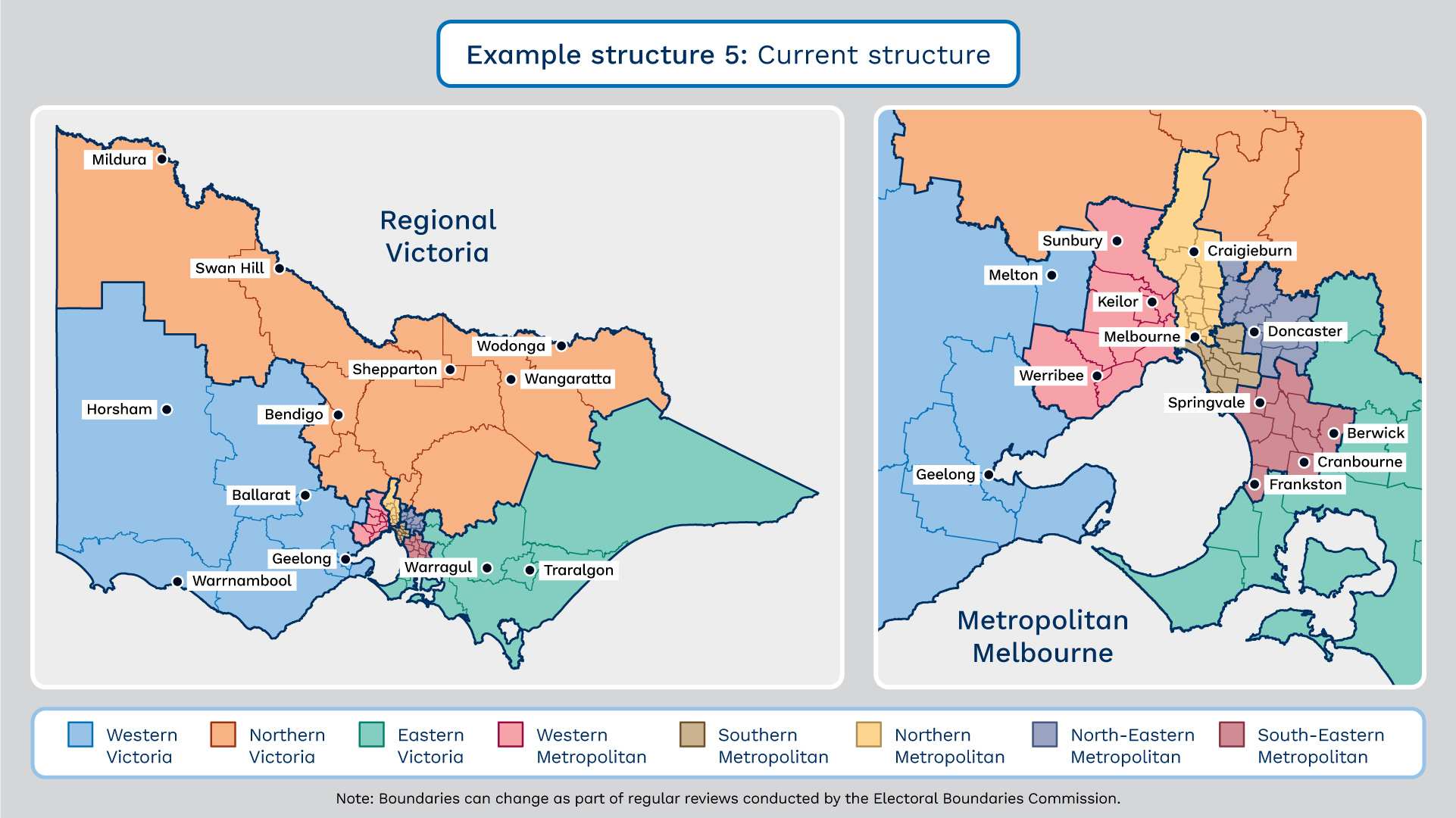The example structures
We created these example structures to help people understand the types of changes that are possible. Please click below to expand and read more.
For additional information about the example structures and their features, read our discussion paper.
We invited public feedback on the example structures. Read our summary of what people said through our online form. People also provided written submissions. These are not included in that summary but are discussed in the Committee’s final report. Read them on our written submissions page.
-
40 members, elected from the state as a whole, with all members elected at every election
No regions. All Victorians vote for all members.
Quota for election (the proportion of votes needed): 2.4% of the state.
-
40 members, elected from the state as a whole, with 20 members elected at each election
No regions. All Victorians vote for all members. Members would be elected for eight years. Only half the members of the Upper House would stand for election at each election.
Quota for election (the proportion of votes needed): 4.8% of the state.
-
40 members, elected from four 10-member regions
Victoria would be divided but into larger regions than the current structure. The quota needed for election would be lower.
Quota for election (the proportion of votes needed): 9.1% of a region.
This is an example of what Victoria might look like with this electoral structure.
The boundaries in these maps are only examples. The Electoral Boundaries Commission would independently determine the actual boundaries.
-
49 members, elected from seven 7-member regions
The total number of members of the Upper House would be increased to 49 (from the current 40). It would not be possible to divide the 88 Lower House districts evenly into seven regions. It would be necessary to either:
- have some regions with 12 districts and some with 13 districts or
- make the boundaries of Upper House regions and Lower House districts different.
Quota for election (the proportion of votes needed): 12.5% of a region.
This is an example of what Victoria might look like with this electoral structure. In the example map, non-metropolitan regions have been given 12 districts each, while metropolitan regions have 13 regions each.
The boundaries in these maps are only examples. The Electoral Boundaries Commission would independently determine the actual boundaries.
-
40 members elected from eight 5-member regions, plus top-up members
With this option, the current electoral structure is maintained. However, if more than 4% of the voters across the state give their first preferences to a party, the party would be guaranteed one seat in Parliament for every 2.5% of the vote received.
If fewer members are elected than the guarantee, the party would be entitled to nominate ‘top-up’ members. The total number of members of the Upper House could vary from one election to another.
For example, if a party received 9% of the first-preference votes across the state but only one member was elected, the party would be entitled to nominate two additional people to become members of parliament. The Upper House would then have 42 members until the next election.
Quota for election (the proportion of votes needed): 16.7% of a region (excluding top-up members).
-
40 members, elected from one 25-member metropolitan region and three 5-member non-metropolitan regions
This structure would combine the area of metropolitan Melbourne into one region, but maintain the current three non-metropolitan regions to ensure that different parts of Victoria are represented.
Quota for election (the proportion of votes needed): 3.8% of the metropolitan region / 16.7% of a non-metropolitan region.
This is an example of what Victoria might look like with this electoral structure.
The boundaries in these maps are only examples. The Electoral Boundaries Commission would independently determine the actual boundaries.





